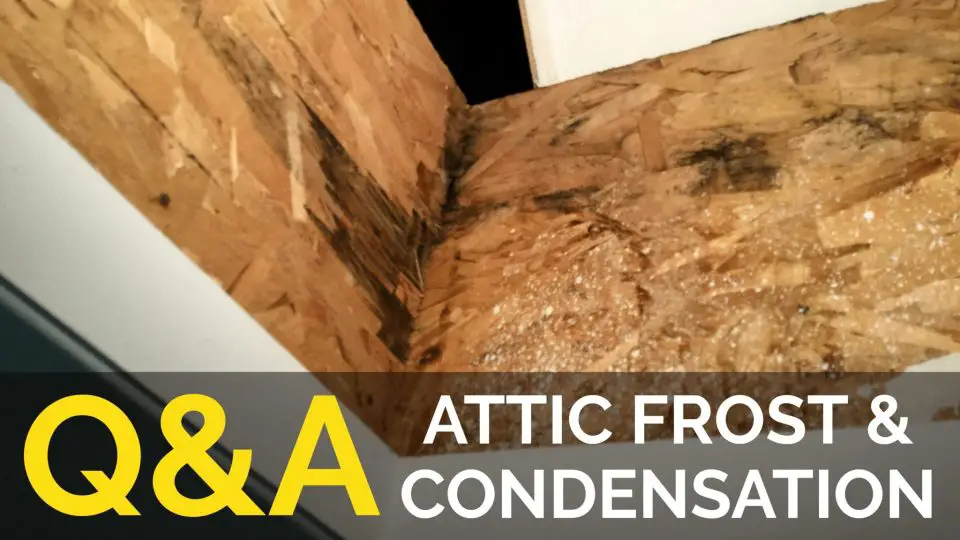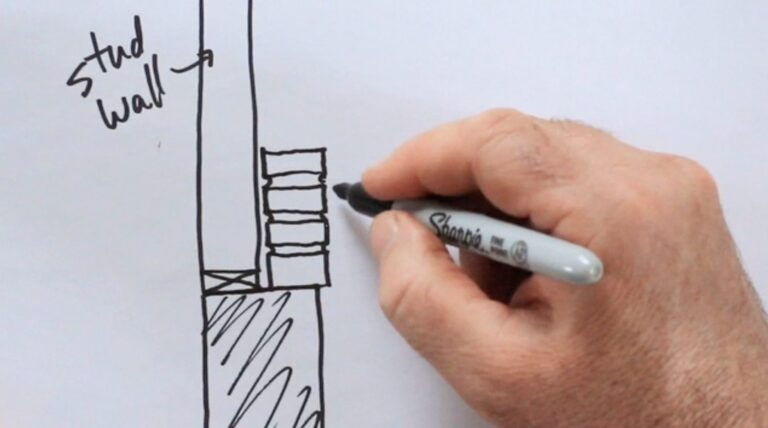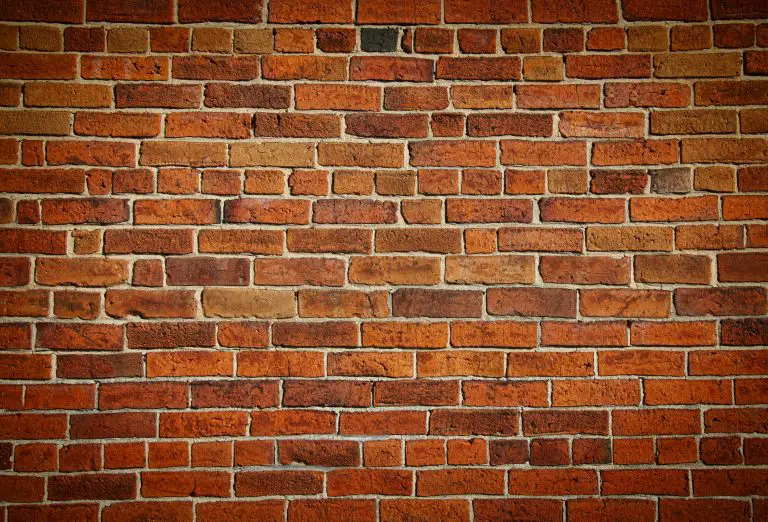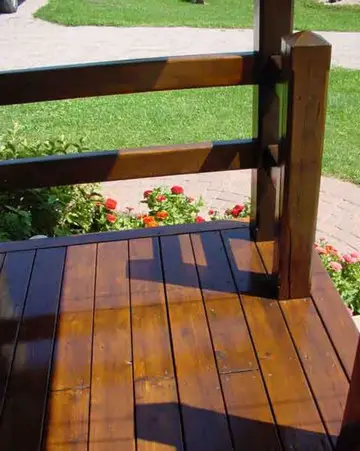Q: As the weather warms up in spring I heard a faint drip-drip sound coming from the attic of my 17 year old bungalow. Water stains and dripping also showed up on the ceiling. When I opened the attic hatch, I found the edges of the hole to be wet. There’s also lots of frost on the plumbing vent pipe as it goes through the attic. My handyman tells me there’s no need for action, but I’m concerned. It doesn’t seem right to have that much moisture in my attic. What do you say?

A: If this were my attic I’d certainly do something. The source of the moisture you see comes from indoor air that’s been leaking into your unheated attic space slowly all winter. As this air cools, it loses some of its ability to hold water. This water comes out as liquid or frost depending on how cold the surface involved is. One reason that unheated attics like yours are ventilated is so moisture from wintertime condensation can leave harmlessly as the weather warms up and the summer gets hot. The thing is, air leaks and the resulting condensation are never a good thing. A little leakage is inevitable, but the less the better. The fact that you could hear some water dripping tells me that way too much condensation is building up.
TECH TIP: You’d be surprised how often I hear from people who have a “leaky roof” on a sunny, warm spring day. The ceiling may be wet and dripping, but the source of the water is melting attic frost not leaking rainwater.
Air Leaks & Condensation
Generally speaking, the #1 source of leaked air in attics is the attic hatch. I can see from the photos you sent that it’s insulated on top (that’s good), but it’s also probably leaking air around the edges. Attic hatches are often the single biggest source of air leakage in many houses. The fit looks tight, but the fact that there’s condensation around the edges proves that air leaks are happening. Indoor air could be making its way into your attic through electrical boxes for light fixtures, but attic hatches are typically the biggest culprit. One simple way to ensure a 100% seal around the hatch is by applying peelable caulking to the seam when the hatch is closed. The best stuff is clear and seals well, though it can be peeled off easily whenever you want.
One other way of tackling this issue is to increase the amount of ventilation area in your roof. Next time you have the roof shingled, have a ridge vent added. Also, it’s not clear in the photos you sent, but your attic insulation might be blocking the free flow of air through the vents at the eaves of your roof. While limiting the amount of leaked air entering your attic from indoors is one part of the fix, boosting air circulation through the attic to the outdoors is another. Ask your handyman to check that the soffit vents are clear, then have the hatch sealed up.
Boosting Whole-House Ventilation
Back in the early 90s I was not yet convinced that mechanical ventilation of modern homes was necessary, but I know now that sometimes it is. Boosting ventilation in winter with a heat recovery ventilator (HRV) will result in a lowering of indoor humidity levels, and this is a good thing when it comes to limiting attic condensation. If the humidity in your entire house is lower, this translates to much less chance of attic troubles, all else being equal. And added benefit is much higher indoor air quality. And attics are not the only place condensation can occur. It can also happen within walls, which is even more of a problem because you can’t see it happening. An HRV can help with this, too.
Understanding Vapour Barriers
Vapour barriers are plastic sheets applied to the warm side of insulated walls and ceilings, and they can be tricky to understand. They’re also crucial to this whole issue. Even many professional builders don’t have a correct understanding in their minds. Click here for a detailed video tutorial on how vapour barriers work and why they’re necessary in a cold climate.

Did you find this useful? I hope so. Please consider helping me cover out-of-pocket expenses to create and publish the articles and videos on this website. Click the “buy me a coffee” button below for a fast, safe and easy way to help out. Thanks to everyone helping me out with a contribution.
– Steve Maxwell












